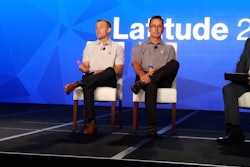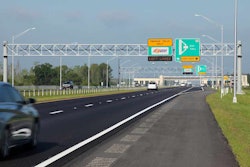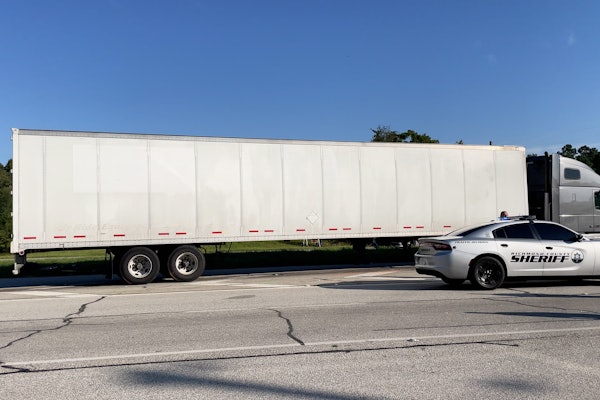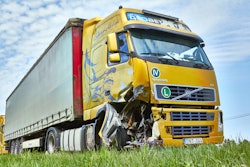Note: This is the second of the three part series that looks ahead at the future of trucking. Subsequent articles will publish throughout the week. The first installment, Connectivity a key component in the future of trucking, can be found here.
Electric mobility and connected trucks may be the two most prominent trends, but Sandeep Kar, chief strategy officer at Fleet Complete, says they fall short of being “the next big thing.”
“The next big thing is what governs the most fundamental relationship between shippers and carriers: the trade transaction,” he says. “Autonomy, [and] electric mobility prognostics is downstream. The upstream transaction between shipper and carrier sets everything else into motion, including purchase of vehicle and that is about to get completely revolutionized by Uber for truck and those kind of technologies that are already here. Basically, it’s the way to connect the freight with the vehicle. It’s going to change [utilization] in the coming years.”
Freight on-demand, Kar adds, could also change the landscape of the highway.
“We may be staring at a future where vehicles are far better utilized and optimized, in which case we might not need so many trucks,” he says.
The shift to a modern load-matching format, Kar adds, is a migration away from inefficient analog process.
“We’re talking about digitization,” he says. “This whole Uber for truck is nothing but a digital freight broker. Prognostics is nothing but digital healthiness and well-being of a truck through predictive analytics. Autonomous driving is nothing but digitization of communication between trucks and infrastructure through digital means. Electromobility also by-and-large relies on digitization. And digitization is nothing but telematics.”
In the more near term, Drivewyze Chief Operating Officer Leo Jolicoeur doubts app-based load matching services will dent the traditional relationship between carrier, broker and shipper. To the contrary, using the real estate industry as a model, he believes it will make the entire process more productive.
“Years ago, a lot of companies started up in the real estate industry with the intent of replacing the broker, replacing the multiple listing service, with a direct connection between buyer and seller,” he says. “That still hasn’t happened yet. The broker, in the case of the real estate market, performs a very valuable service. And I think that is the case within the truck/shipping marketplace.”
Squeezing out the little guy
With each passing technological innovation, carriers argue about who most benefits from them, with smaller carriers almost universally agreeing new tech is an oppressive financial burden. However, Kar says smaller fleets and owner operators stand to benefit more than anyone else.
“The question in the past was, ‘Here is a truck I bought. What can I do with it?’,” Kar says.
“Now it’s coming to a point that with the service the truck is providing, ‘What can that truck do for me?”
“It’s going to empower them,” Kar adds of small fleets and owner-operators. “[Small carriers] are technologically challenged and often they don’t get it. That is the reason why bigger fleets with deeper pockets benefit. They have their own battery of idea people and engineers who help them get the most loads and they are better optimized. They are killing it. It’s the small to mid-size fleets who are really at the mercy of brokers and other people who charge an arm and a leg for certain services. Once digitization comes in, they won’t have to rely on people for [helping them] make money.”
Carries who go into this digital future, Kar says, the ones who embrace the challenges that lie ahead stand to completely reinvent their business.
“I would argue that this brave new world we’re entering is actually going to be better for owner-operators and small-size fleets,” he says. “The fact is all these technologies were developed and designed at the white-board level to solve problems for small to mid-size fleets. They were never designed, really, to solve the problems of large fleets.”
While there is a wide perception that advanced technologies will drive small fleets out of business but with the right frame of mind, Kar says, it can level the playing field for participants both large and small.
“The question now is, are they psychologically prepared for it, because when this kind of news breaks – when these types of trends emerge – it’s the bigger fleets that jump into it. Owner-operators and small-size fleets think it’s [the large fleet’s] domain,” he says. “There needs to be an open mind to understand what technology can do for us and how can we embrace it in ways to compete with bigger fleets.”
Likewise, Jolicoeur predicts the industry is at least a decade away from technologies that would allow a truck to operate without a driver in the cab, ensuring that drivers still have a job for the foreseeable future. He points to the military and its use of unmanned drones as an example.
“The fact of the matter is, those drones need to be piloted. Autonomous vehicles for a great period of time will need to be piloted,” he says. “I think, potentially, there will be a different role for a human being on a truck: the equivalent of the conductor or the attendant who cares for that truck while it’s being driven.”











